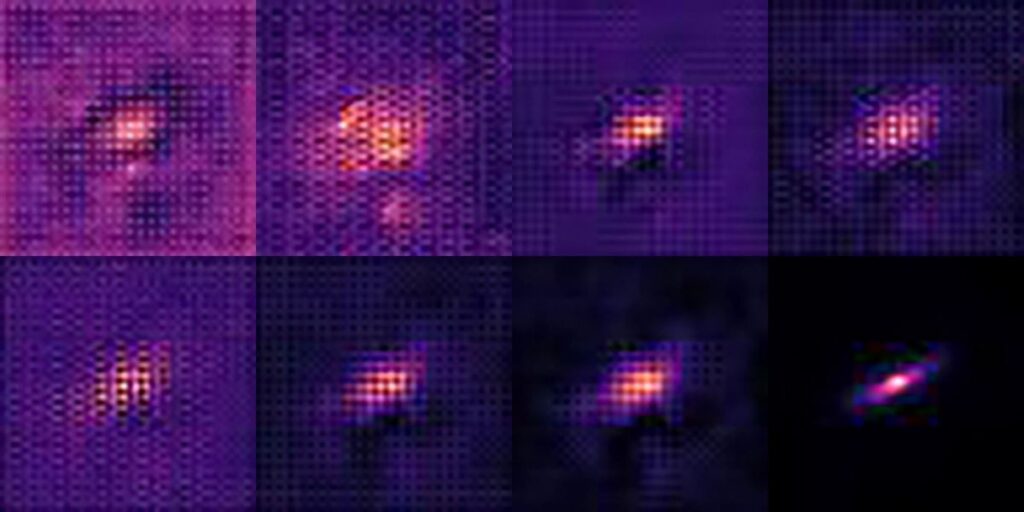TL;DR:
- AI is transforming the field of astronomy, enhancing data analysis and image processing.
- Neural networks are pivotal, accelerating data classification and improving image quality.
- AI aids in removing optical interference from ground-based telescope images.
- Astronomers use AI to explore Mars, understand the sun’s corona, and determine star ages.
- Cosmologists rely on AI to investigate dark matter and dark energy, which constitute a majority of the universe’s energy.
- AI-driven data management is essential for handling vast volumes of astronomical data.
- AI assists in detecting anomalies and unexpected celestial objects.
- The future of astronomy is intertwined with AI’s potential for groundbreaking discoveries.
Main AI News:
In the ever-evolving landscape of science, astronomy stands out with its profound tradition of deciphering the universe’s mysteries through data analysis, accidental revelations, and the intricate interplay of theory and observation. Artificial intelligence (AI) now emerges as a transformative force, propelling astronomy into uncharted realms of efficiency and potency. It is undeniable that AI is set to redefine our cosmic interactions, ushering in a new era of discovery.
AI encompasses a wide array of software tools and techniques, with neural networks being a cornerstone of its application in astronomy. These networks, equipped with the capacity to learn from vast training datasets, offer unprecedented insights when applied to real astronomical data.
Consider data processing a pivotal step in the astronomical journey. The mesmerizing images from space telescopes like Hubble and James Webb are not their initial drafts; they undergo a rigorous transformation. Raw astronomical images teem with errors, foreground clutter, contaminants, artifacts, and noise. Cleansing and processing these images to unveil their true scientific potential necessitates an immense effort, often a blend of manual and automated interventions. AI now plays a pivotal role in this arena, sifting through data to extract valuable insights, producing pristine visuals for scientific inquiry.
In a recent illustration of AI’s prowess, an image of the supermassive black hole at the core of galaxy Messier 87 (M87), initially unveiled in 2019, received a machine learning “facelift” in April 2023. The result was a remarkably clearer depiction of the black hole’s structure, showcasing AI’s capacity to enhance scientific visualization.
Astronomers are also harnessing AI’s capabilities for galaxy classification. By feeding images of galaxies into neural network algorithms equipped with predefined classification schemes, astronomers accelerate the process of cataloging galaxies. This AI-driven approach dramatically outpaces manual classification in terms of speed and accuracy.
Moreover, AI contributes to refining ground-based telescope images by eliminating optical interference caused by Earth’s atmosphere, making celestial observations more precise.
AI’s reach extends even further, potentially revolutionizing our understanding of Mars, the sun’s enigmatic corona, and the ages of stars. Cosmologists, in particular, are employing neural networks to delve deeper into cosmic enigmas, notably dark matter and dark energy, which collectively account for over 95% of the universe’s energy content.
To discern the properties of these enigmatic entities and their evolution throughout cosmic history, cosmologists leverage AI in deciphering complex computer simulations. These simulations manipulate the characteristics of dark matter and dark energy to unveil their effects on the universe. The neural networks then sift through this data to unveil the universe’s myriad transformations.
As astronomical observatories produce staggering volumes of data, the significance of AI amplifies. The forthcoming Vera C. Rubin Observatory in Chile, poised to provide over 60 petabytes of raw high-resolution sky images, exemplifies this data deluge. Only computers, guided by AI, possess the capacity to navigate such vast datasets.
Beyond data management, AI plays a pivotal role in detecting the unexpected. Just as William Herschel serendipitously stumbled upon Uranus during a routine sky survey, AI can now flag intriguing anomalies by identifying deviations from established patterns. Notably, AI has already contributed to identifying potentially hazardous asteroids, a critical task for the Vera C. Rubin Observatory.
As we gaze upon the cosmos, AI stands as our newfound ally, unlocking mysteries that were once beyond our grasp. The future of astronomy is undeniably intertwined with the inexhaustible potential of artificial intelligence. Who could have foreseen the discoveries that await, all thanks to the remarkable capabilities of machines?

Eight images that show an AI software’s process of “unblurring.” To remove the effects of Earth’s atmosphere from an image, the process pushes the starting image through eight layers of network, generating eight intermediate images. The earliest image is at top left, and the final image is at bottom right. Source: Emma Alexander/Northwestern University
Conclusion:
The integration of AI into astronomy has far-reaching implications for the market. It enhances the efficiency and accuracy of data processing, making astronomical research more accessible and productive. AI-driven advancements are set to reshape the industry, creating opportunities for innovative solutions and technologies that cater to the growing demands of the astronomical community. Investors and businesses should consider the expanding role of AI in astronomy as a promising avenue for investment and collaboration.

